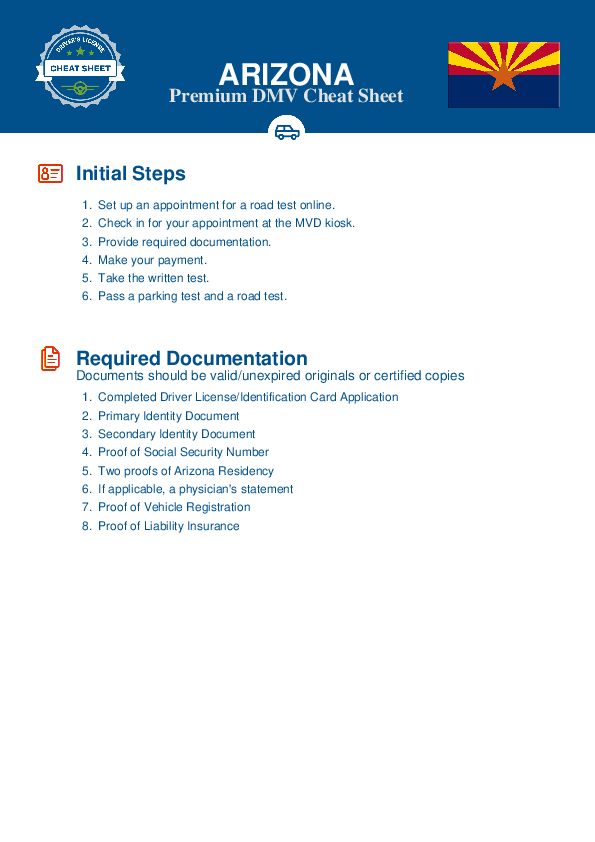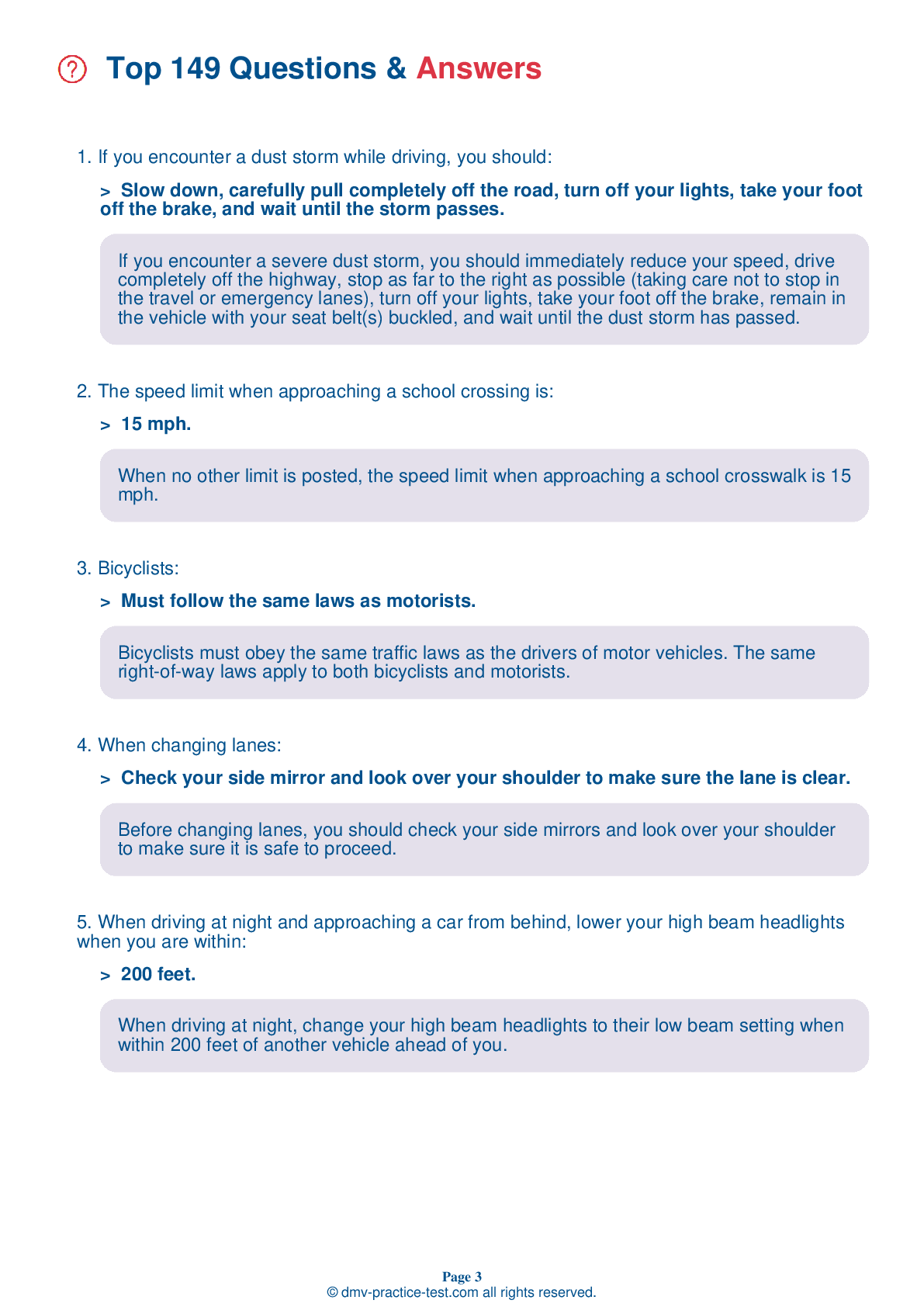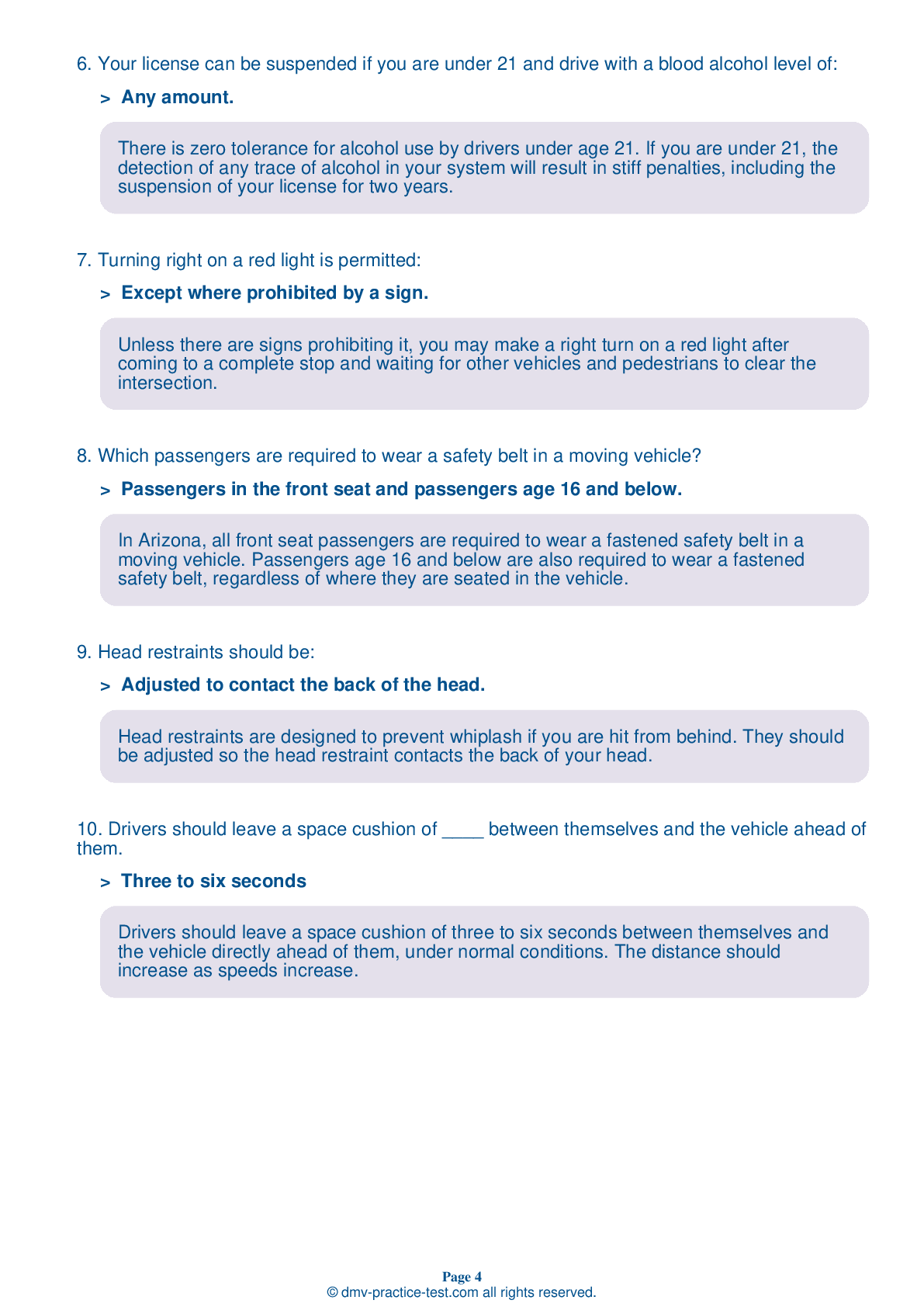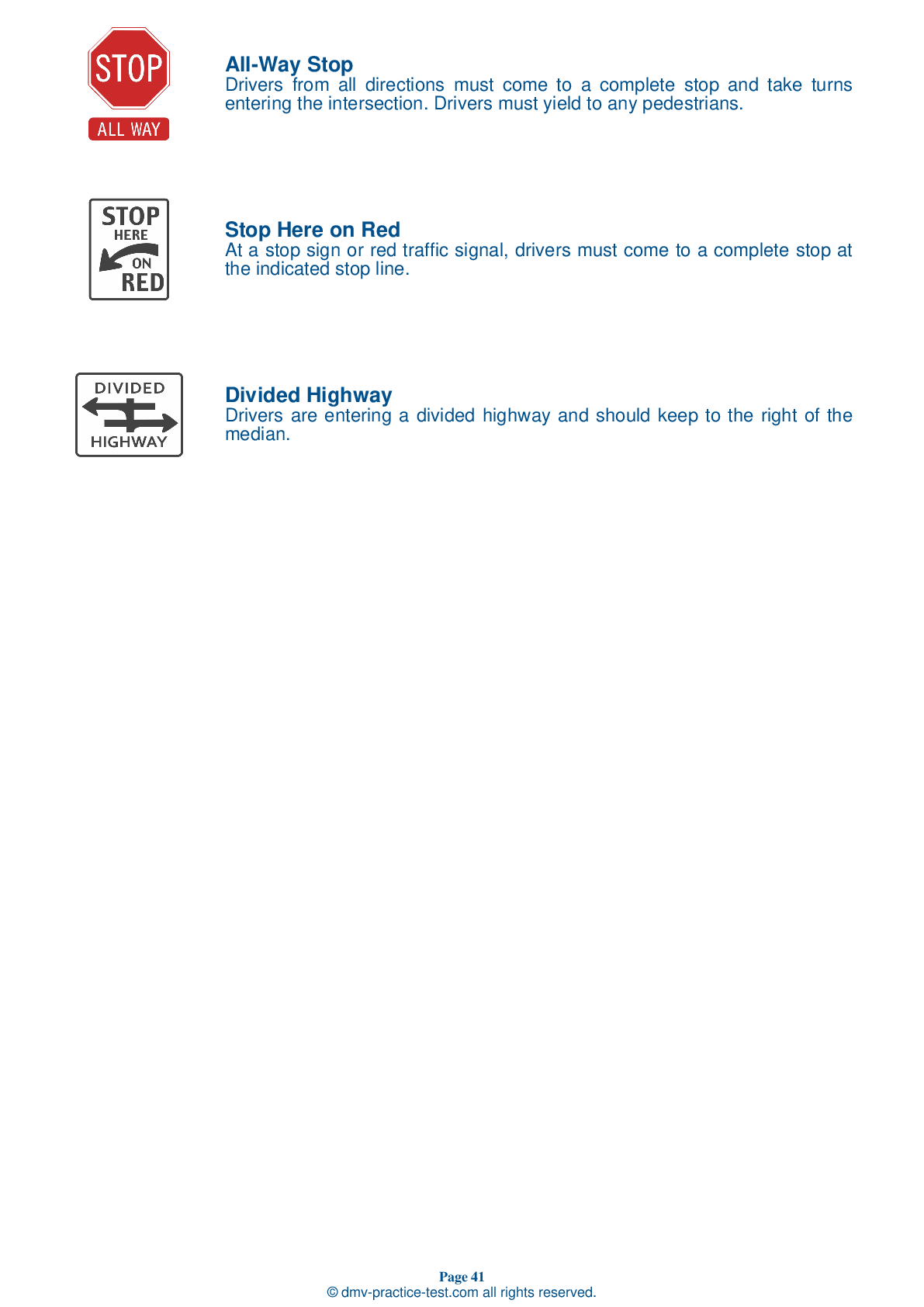FREE Arizona DMV Practice Test #12 Page 3 of 4
This DMV practise tests for Arizona was just updated for January 2026. It includes questions based on the most important traffic signs and restrictions from the 2026 Arizona Driver Handbook. To prepare for the DMV driving permit test and driver's licence exam, use actual questions that are very similar (often identical!) to the DMV driving permit test and driver's licence exam.
Each practise test question offers a recommendation and explanation to help you remember the topics. Questions about road rules, traffic signs, and driving statutes, as well as information from the Driver Handbook, will be included in the written portion of the official DMV test.
You must properly answer 24 out of 30 questions to receive a passing grade. To help you prepare for your Arizona instruction permit or driver's licence, take our DMV practise test.
The DMV exam is accessible in a variety of languages.
Using a testing aid of any kind will result in an automatic failure, and the DMV may take additional action against your driver's licence, so don't do it.
17 . When merging onto the freeway, you should be driving:
You should enter a freeway at or near the speed of traffic, unless the speed of traffic exceeds the legal speed limit.
18 . Allow extra space in front of your vehicle when following a:
Allow for extra space when driving behind a motorcycle. Motorcycles can stop more quickly than other vehicles can and you must have adequate room to stop if the motorcyclist brakes or falls off. Also, remember that motorcycles are difficult to see at night because they only have one tail light.
19 . This sign means you are approaching a railroad crossing that does not have a signal. You should:
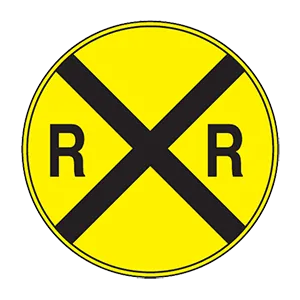
At a railroad crossing marked with this sign, a driver should look both ways, listen for any trains, and be prepared to stop if any trains are nearby. Never try to outdrive an oncoming train.
20 . A steady green traffic light at an intersection means:
A steady green traffic light indicates that the driver may continue through the intersection. The driver should yield to traffic or pedestrians already in the intersection and proceed when the intersection is clear.
21 . If the driver of an oncoming vehicle fails to dim their headlights:
If an oncoming driver fails to dim their headlights, look toward the right side of the road. This will keep you from being blinded by the other vehicle’s headlights and allow you to see enough of the road to stay on course. Do not try to retaliate by keeping your bright lights on.
22 . If you are driving and a tire suddenly goes flat, you should:
If a tire blows out or suddenly goes flat while you are driving, grip the steering wheel firmly and keep the vehicle aiming straight. Take your foot off the accelerator and do not brake. Allow the vehicle to slow by itself and use the brakes gently, but only if necessary. Pull off the road when it is safe to do so.
23 . You drive defensively when you:
You are driving defensively when you are looking down the road for potential hazards. Constantly staring at the road directly in front of your vehicle is dangerous. As you scan ahead, be alert to vehicles around you.
24 . This sign means:
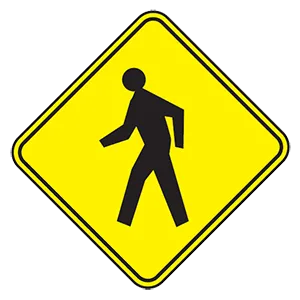
This sign marks the presence of a crosswalk. Be alert to any pedestrians that may be crossing the roadway.
See the exact questions that will be on the 2026 Arizona DMV exam.
99.2% of people who use the cheat sheet pass the FIRST TIME
LT gives us an insight on how the cheat sheet provided her with all the study questions she needed before taking her test.
Joe initially studied with the handbook and failed his test, he eventually found us online, studied and pass his test the first time around.
